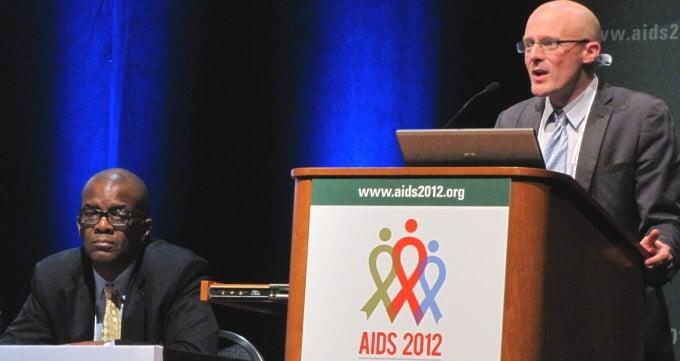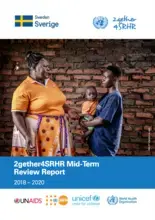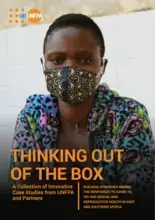UNFPA achieved high visibility at the recent International AIDS Conference in Washington, DC through its Condomize Campaign. The work of UNFPA featured strongly in relation to HIV prevention in Africa, and integrated sexual and reproductive health and HIV prevention. Poster presentations from UNFPA supported work in Mozambique, Swaziland and Zimbabwe (see links below).
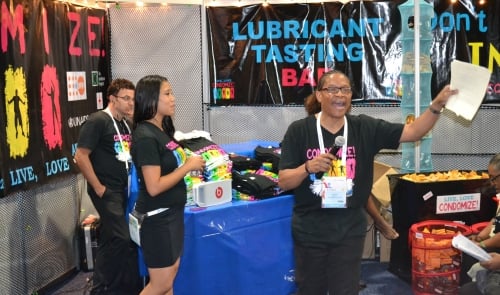
The conference attracted high-profile personalities, scientists, programmers and activists meeting under a theme of Turning the Tide Together. The aim of the UNFPA regional members was to gather evidence relevant to the Africa regionand to share recent findings and experiences from UNFPA’s work in relation to sexual and reproductive health and HIV.
This included organizing a session on HIV prevention in Africa, and facilitating a skills building session on integrated sexual and reproductive health and HIV prevention for key populations. The conference also proved useful in establishing a number of links during side meetings.
HIV prevention in Africa
A UNFPA-supported satellite session discussed the state of HIV prevention in generalized epidemics in Africa. Based on a review of the evidence on efficacy and effectiveness of interventions, policy recommendations for HIV prevention in Africa were discussed (see link below). UNAIDS data suggested that the global response is not on track for achieving the goal of reducing sexual transmission of HIV by half, but there was limited focus on combined prevention impact. A policy brief and a manual on combined prevention strategies in Africa are being developed.

Integration of LGBTI, SRHR and HIV
The experiences of the joint UNFPA/UNAIDS project on linking HIV and SRHR in seven countries in Southern Africa was shared as an introduction to the skills building session on using a tool developed by SafAIDS to address LGBTI ( Lesbian Gay Bisexual Transgender and Intersex) , SRHR (Sexual and Reproductive Health and Rights) and HIV (see link below) . The tool has been pre-tested among health service providers and community groups in Zimbabwe and has received positive feedback.
Devices for male circumcision
New evidence on two adult male circumcision devices was presented – that of the Shang ring and the Prepex devices, both of which are non-surgical as they work through necrosis rather than cutting. A study comparing Prepex and surgical male circumcision supported by the UNFPA Zimbabwe Country Office was presented and showed a favourable outcome in terms of low complication rates and procedure time.
Girls are a priority in HIV prevention
Adolescent girls in Africa remain a key priority for HIV prevention worldwide and in Africa particularly. Access to education has been identified as a critical structural factor to be addressed. There is evidence from a trial in Malawi that cash transfers to households with adolescent girls increased school attendance and reduced HIV incidence among the targeted girls. However, the annual cost of a scale up would go beyond current HIV prevention budgets and would require funding outside those.
Hormonal contraception and HIV
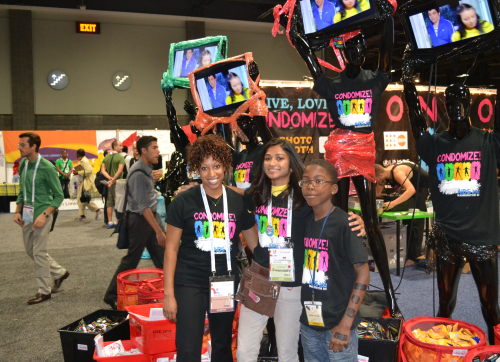
After a study found a link between the use of hormonal contraceptives and HIV, WHO conducted a review of the evidence and held an expert consultation. Based on that, WHO recommended to continue offering all types of hormonal contraception to women, but to promote condom use among women using injectable contraceptives like Depo Provera. The implications of this for high HIV prevalence countries in Africa were discussed in a session at AIDS 2012. Panelists and speakers called for more research and a greater variety of contraceptives to be offered to women.
Session highlights
In the key areas discussed – basic science and general issues, sexual and reproductive health and HIV linkages, and HIV prevention – the following main points emerged:
- The research community is pursuing a combination of different research options towards a cure for AIDS but no cure is yet in sight, with the focus of research now on issues such as virus reservoirs.
- As over 8 million patients have been reached with ART, the target of 15 million patients on ARVs is realistic.
- The question of whether there is sufficient treatment benefit from starting ART treatment at a CD4 count of CD4<500 versus CD4<350 is still considered open.
- The UNAIDS Investment Framework proposes a focus on six core activities – PMTCT, male circumcision, condoms, behaviour change, ART and key populations.
- It is projected that from the current 16.8 billion US$ per year, the global AIDS response will need around 22 billion US$ per year by 2015.
- The unclear evidence on the effect of progestin-only injectable contraceptives (Depo) on HIV was seen as another reason to increase the contraceptive method mix for women.
- Integrating family planning into HIV services (HTC, ART) and integrating HIV testing into family planning and maternal health services can be cost-efficient, a review of evidence shows.
- Initiating ART for all HIV+ pregnant women was discussed as the most promising choice for PMTCT (Option B+), as demonstrated by the Malawi country experience.
- Two studies using HIV incidence as an outcome did not find an effect of GBV prevention on HIV, but did show reductions in GBV and a few other behavioural indicators.
- In the future people living with HIV will live longer and will be more likely to contract and die of non-communicable diseases, thus early diagnosis and entry into care is recommended.
- Treatment as Prevention (TasP) received great attention. While risk reduction has been shown under trial conditions for early ART (96 per cent among sero-discordant couples) and PrEP (0-73 per cent), models and real life data show a range of varying results. Further efforts are required to study the extent of population-level impact under real-life conditions.
- South Africa has reached over 13 million people in its testing campaign since 2010 with 48 per cent having a CD4 count of above 350, thereby contributing to initiating people early on treatment.
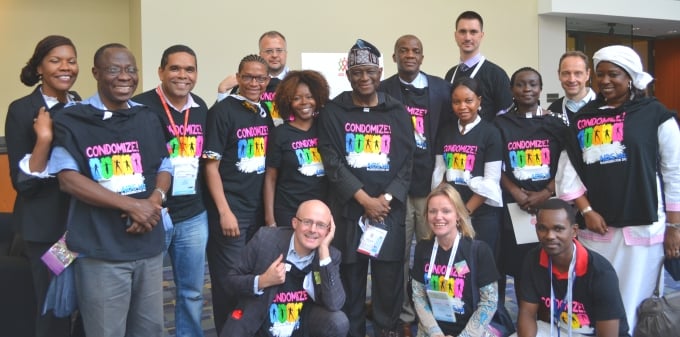

Presentations
A Review of HIV Prevention in National Strategic Plans in 12 African Countries with Generalized HIV Epidemics: Is our focus in line with the evidence?
Linking LGBTI, HIV and SRHR issues - the realities on the ground in Southern Africa: SAfAIDS LBTI Skills Building Session
Posters
A case study on advancing the sex workers' agenda through catalytic HIV funding in Namibia
HIV prevention in Mozambique: intersectoral community dialogue in developing culturally appropriate sexual and reproductive health practices
Determinants of young girls' (15-24 years) vulnerability to HIV infection in Mozambique
Empowering sex workers to claim their right to access non-stigmatizing HIV and AIDS health and social services in Namibia

